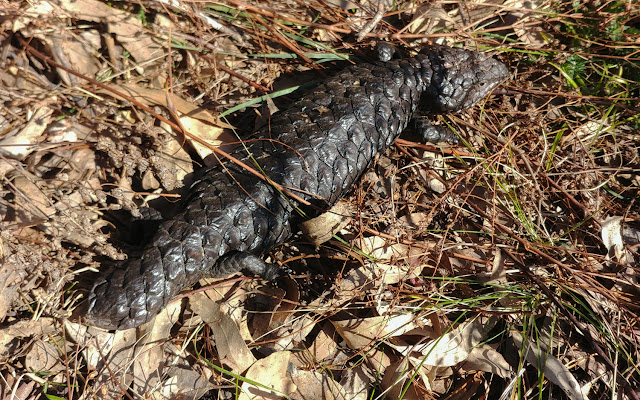Frogmouth chick rescue
Following on from the last post on how frogmouth fledglings are vulnerable to becoming grounded and dying in tall grass, I found such a bird yesterday. I was monitoring the progress of some of my study birds and was expecting them to have fledged the night before. When I went to the nest site, I saw that they had indeed fledged. The nest was empty and the parents were perched on a branch in a neighbouring tree with one chick beside them. That raised alarm in me as I knew there had been two chicks ready to fledge only a few days prior. Usually, when there are two fledglings and they have split up, mum will sit beside one chick and dad with the other. But, there were both parents with only one chick. Where was the other. Unlike in the previous post, when one chick had probably grounded in wet tall grass and succumbed to hypothermia, in this case the grass was tall, but dry, so I reckoned that if a chick had grounded in the tall grass in the previous night, it could still be alive. So I searched for it, very, very slowly, and careful to look down into the grass before I moved my feet. I didn't want to step on it.
As the adults tend to sit with a chick each if they are separated, I thought the missing chick might be directly below where the rest of the family were perched. And yes, it was, and it was alive.The grass was more than knee deep and thick, so the bird could not climb up, fly up on its weak wings, or even struggle through the dense growth. It would have died if I had not found it.
The fledgling had fluttered about twenty metres before grounding, not far from the nest branch which can be seen in the background.
And yes the chick was not only alive but perky, giving a ferocious sounding growl as I bent down to pick it up. It opened its big mouth wide and flashed its wings to appear powerful and more fearsome than it really was.
Of course, once the fledgling began to react, its parenst both reacted to my interference. They both hooted aggressively and swooped over me. That is a big commitment for frogmouths as they only fly in daylight under extreme circumstances of danger. Here dad sits above me, watching my every move as I carefully picked up his still-dependent offspring.
The fledgling looked bigger than it actually was. Most of its growth so far had been in bone and feather development. There were only weak muscles beneath all that fluff.
I popped the bird onto a dead branch in the shade below where the family were perched. This is the best thing to do if anyone finds a frogmouth chick on the ground. The adults will be close by watching. Just because we might not see any adults, that does not mean there are none there. These are frogmouths, masters of disguise and they can be very difficult to see when perched motionless in a tree, which is what they do most the day.
The fledgling soon settled on its new perch and as I walked away it faded deeper and deeper into the mix of branches. I reckon it would have been safe and a parent would soon fly down to perch next to it for the rest of the day to defend it.
But how many other fledglings have died this year in the wet and windy we have had.


















































